32 F. high in the Twin Cities Tuesday.
24 F. average high on January 20.
31 F. high on January 20, 2014.
January 20, 1922: High pressure areas that move across this region in the depths of winter are stronger than at any other times of the year. The barometer at Collegeville hit 31.11 inches. A record high pressure for the state.
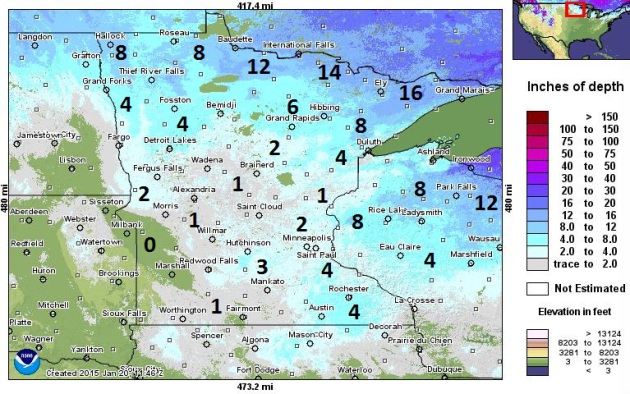
There is precious little snow on the ground over central Minnesota. The combination of no snow, open fields & high winds from a treadmill of clippers has produced severe wind erosion; topsoil blown downwind into drainage ditches, creeks and rivers.
A heavy blanket of snow is not only moisture-money in the bank for planting season, but it also holds topsoil in place. Greg Larson sent me amazing photos which are on my weather blog below.
Latest guidance shows a slow-moving, potentially beefier Alberta Clipper spreading snow into Minnesota Saturday night and Sunday. Plowable snowfall amounts are possible with this system; it's still too early for specifics.
The core of any bitter air pushes into the Great Lakes and New England in coming weeks, spinning up a parade of east coast storms.
We chill back down to single digits and teens by late next week but no polar pain is imminent here into early February. This is prime time for arctic invasions, so every day above 30F is a blessing, or a curse if you happen to like snow.
Pacific air pushes the mercury close to 40F by next Wednesday. That's roughly 40-60 degrees warmer than late January, 2014.
80 degrees if you count the wind chill.

Regards,
Greg Larson, Excelsior
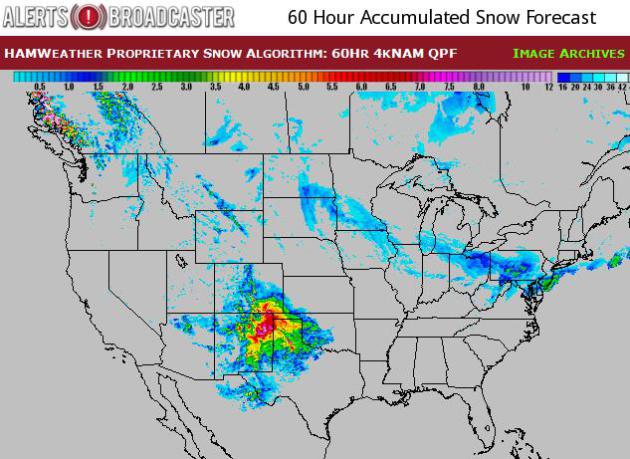

Ski Texas. The map above shows 4 KM NAM guidance of accumulating snow over the next 60 hours, a big bullseye of heavy snow over New Mexico and the Panhandle of Texas, where some 3-6" amounts are possible. Source: Aeris Weather.
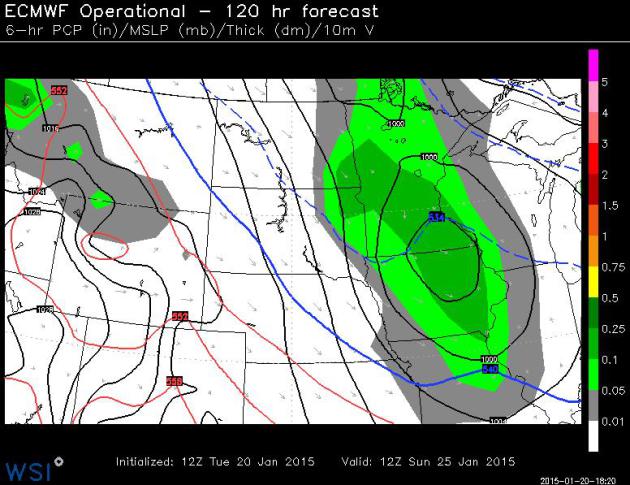

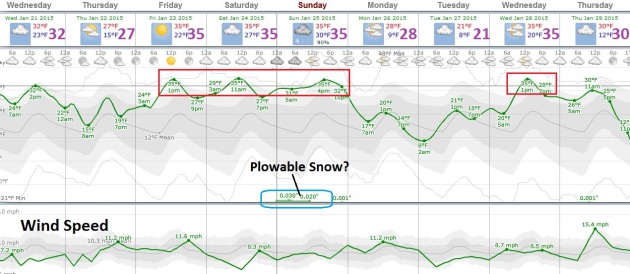
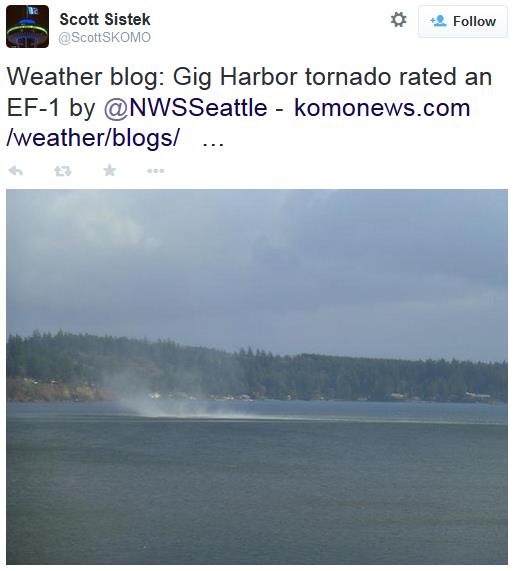

Image credit above: "JPSS-1 is the second spacecraft within NOAA's next generation of polar-orbiting environmental satellites- scheduled to launch in early 2017." (Photo Credit: Ball Aerospace & Technologies Corp.)

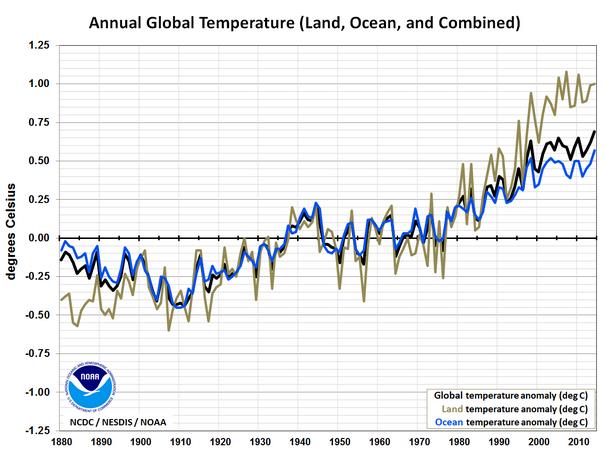
- During 2014, the average temperature across global land and ocean surfaces was 1.24°F (0.69°C) above the 20th century average. This was the highest among all 135 years in the 1880–2014 record, surpassing the previous records of 2005 and 2010 by 0.07°F (0.04°C).
- Record warmth was spread around the world, including Far East Russia into western Alaska, the western United States, parts of interior South America, most of Europe stretching into northern Africa, parts of eastern and western coastal Australia, much of the northeastern Pacific around the Gulf of Alaska, the central to western equatorial Pacific, large swaths of northwestern and southeastern Atlantic, most of the Norwegian Sea, and parts of the central to southern Indian Ocean.

Explainer: How Do Scientists Measure Global Temperature? Carbon Brief
has a good explanation of how NOAA, NASA and JMA (Japan Meteorological
Agency) all came to the conclusion that 2014 was the warmest year,
globally, on record: "...To get a complete picture of Earth's
temperature, scientists combine measurements from the air above land and
the ocean surface collected by ships, buoys and sometimes satellites,
too. The temperature at each land and ocean station is
compared daily to what is 'normal' for that location and time, typically
the long-term average over a 30-year period. The differences are called
an 'anomalies' and they help scientists evaluate how temperature is
changing over time. A 'positive' anomaly means the temperature is warmer than the long-term average, a 'negative' anomaly means it's cooler..."

What Will Kill Us And When? If you're feeling a bit blue this should cheer you up, courtesy of Digg: "Do
you fear death? No? Well this BBC infographic of what is most likely to
destroy humankind and when will change that. Good luck getting to sleep
tonight."
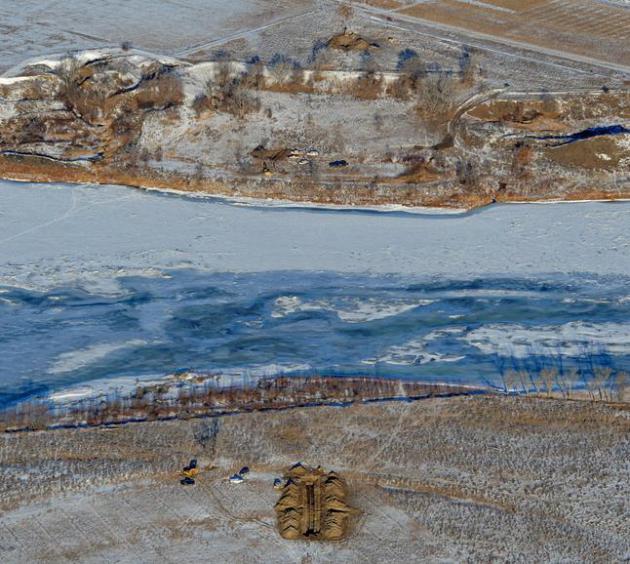
Up To 50,000 Gallons of Oil Spilled In Yellowstone River.
Residents Told Not To Drink Water. Hey, what can possibly go wrong with
the (pending) Keystone XL Pipeline? Here's an update from CNN: "A
Montana pipeline burst sent as much as 50,400 gallons of oil gushing
into the Yellowstone River, prompting the governor to declare a state of
emergency. Residents in nearby cities were told not to drink the tap
water, which some said smelled like diesel..."
Photo credit above: "Crews
work to contain an oil spill from Bridger Pipeline's broken pipeline
near Glendive, Mont., in this aerial view showing both sides of the
river on Monday, Jan. 19, 2015. Officials said that they were bringing
truckloads of drinking water to Glendive after traces of 50,000 gallons
of oil that spilled into the Yellowstone River were found in the city's
water supply." (AP Photo/The Billings Gazette, Larry Mayer).

Solar Is Cheaper Than Electricity From The Grid in 42 of 50 Largest U.S. Cities. We are #27! EcoWatch has the article; here's an excerpt that caught my eye: "...Now a new report called Going Solar in America,
prepared by the North Carolina Clean Energy Technology Center with the
support of the U.S. Department of Energy’s SunShot Initiative, shows how
the plummeting costs of going solar could already make it the more
economical choice for energy consumers in 42 of the U.S.’s 50 largest cities.
It found that in those cities, a fully financed solar system would cost
average residential consumers less than they would pay for electricity
from their current local utility. New York and Boston topped the list,
in large part because the cost of electricity from the grid is very
expensive there..."
"Going Solar in America". The pdf report is here.

Sweden's Icehotel. Then again you could just camp out in your backyard. Here's a clip from a morbidly fascinating story at Gizmag: "...The
Icehotel is located 200 miles (322 km) north of the Arctic Circle in
the village of Jukkasjärvi, and covers an area of 5,500 sq m (59,200 sq
ft). In addition to the usual categories for hotel rooms such as super
deluxe and deluxe, there area also art suites, Northern Light suites,
snow rooms and ice rooms available. Around 35,000 people stay at the
hotel every year..."

8 Things You Can Do To Make Life More Meaningful. PBS Next Avenue has an article with some unusual suggestions, including listening twice as much as you talk: "...The
squeaky wheel may get the grease, but in the long run, do you want to
be remembered as the person who always interrupted, who spoke in
monologues, who asked the same questions repeatedly? Listening, truly
listening, is an act of generosity and graciousness. Its implicit
message: “You are important.” Seriously, has anybody ever criticized a
friend, a party guest, a colleague or a customer service rep for being
too good a listener? (And while you're at it, put the cell phone away!
Not on vibrate. Away!)..."
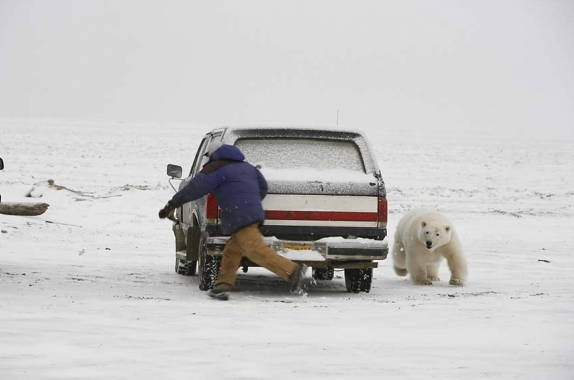
TODAY: Clouds, few flakes in the air. Winds: N 5-10. High: 31
WEDNESDAY NIGHT: Partial clearing, a bit colder. Low: 19
THURSDAY: Mix of clouds and sun, dry sky. High: 29
FRIDAY: Peeks of sun, drippy icicles. Wake-up: 23. High: 37
SATURDAY: Better travel day. Late night snow. Wake-up: 28. High: 35
SUNDAY: Next Alberta Clipper. Potential for a few inches. Wake-up: 30. High: 32
MONDAY: Some sun, average temperatures. Wake-up: 19. High: 28
TUESDAY: Plenty of sun, not bad at all. Wake-up: 12. High: 27
Climate Stories...

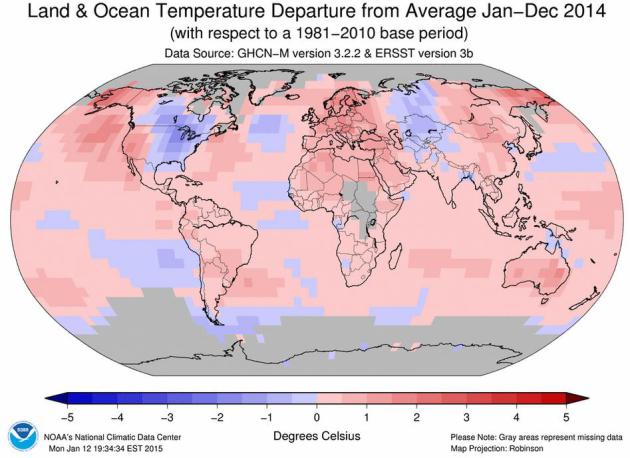

Pope Has U.S. Climate Naysayers In An Uproar. Here's an excerpt from an AP story at The Star Tribune: "...He
said global warming was “mostly” man-made. And he said he wanted his
encyclical out in plenty of time to be absorbed before the next round
of U.N. climate change talks in Paris in November. “I don’t know if it
[human activity] is the only cause, but mostly, in great part, it is man
who has slapped nature in the face,” Francis said. “We have in a sense
taken over nature...”
Photo credit: AP Photo/Giuseppe Cacace, pool.

Why Do Religious People of Color Care So Much About Climate Change?
Climate change will become one of the most pressing civil rights issues
of the 21st century. Because those with the least will be the first to
be impacted. Deseret News has the story - here's a clip: "...Contrary
to the prevailing perception that climate change is primarily a cause
for upper-middle-class, highly educated white liberals, a 2014 survey
from the Public Religion Research Institute shows the highest levels of
concern for the issue can be found among black Protestants like the
Rev. Keys, as well as Hispanic Catholics. Compared with 50 percent of
all Americans, 73 percent of Hispanic Catholics and 58 percent of black
Protestants said they were "very concerned" or "somewhat concerned"
about climate change..."
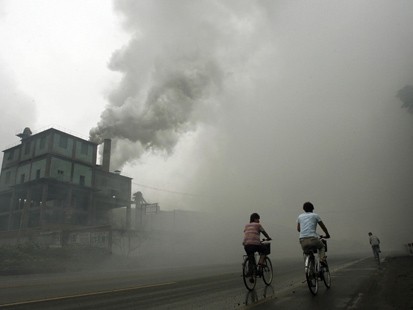
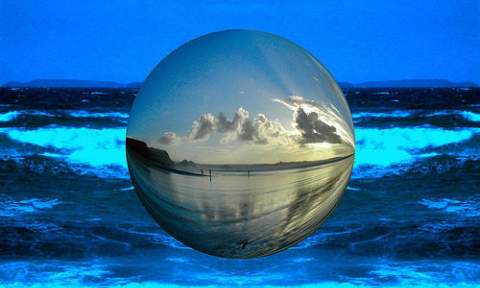

2014 Breaks Heat Record, Challenging Global Warming Skeptics. In case you missed the formal announcement late last week here's an excerpt of a Justin Gillis article at The New York Times: "...Extreme
heat blanketed Alaska and much of the western United States last year.
Records were set across large areas of every inhabited continent. And
the ocean surface was unusually warm virtually everywhere except near
Antarctica, the scientists said, providing the energy that fueled
damaging Pacific storms. In the annals of climatology, 2014 surpassed
2010 as the warmest year. The 10 warmest years have all occurred since
1997, a reflection of the relentless planetary warming that scientists
say is a consequence of human activity and poses profound long-term
risks to civilization and nature..."
Map credit: NOAA, NASA, New York Times.

Global Warming Made 2014 A Record Hot Year.
Here's more perspective on last year's warmth, which is significant in
light of the absence of a significant El Nino. An excerpt courtesy of The Guardian: "...But what’s really remarkable is that 2014 set this record without the aid of an El Niño event. El Niño events
create conditions in which sea surface and hence global surface
temperatures are anomalously hot. We call this part of the Earth’s
“internal variability” because these events just temporarily shift heat
around between the ocean surface and its depths. As this graphic shows (click here for an animated version), the last five record hot years of 2010, 2005, 1998, 1997, and 1995 were all assisted by El Niño events..."
Animation credit: Skeptical Science.
It's Official: 2014 Was The Hottest Year On Record. Bloomberg has a remarkable animation that puts the recent warming into stark perspective: "Deny this. The animation below
shows the Earth’s warming climate, recorded in monthly measurements
from land and sea over 135 years. Temperatures are displayed in degrees
above or below the 20th-century average. Thirteen of the 14 hottest
years are in the 21st century."

No comments:
Post a Comment